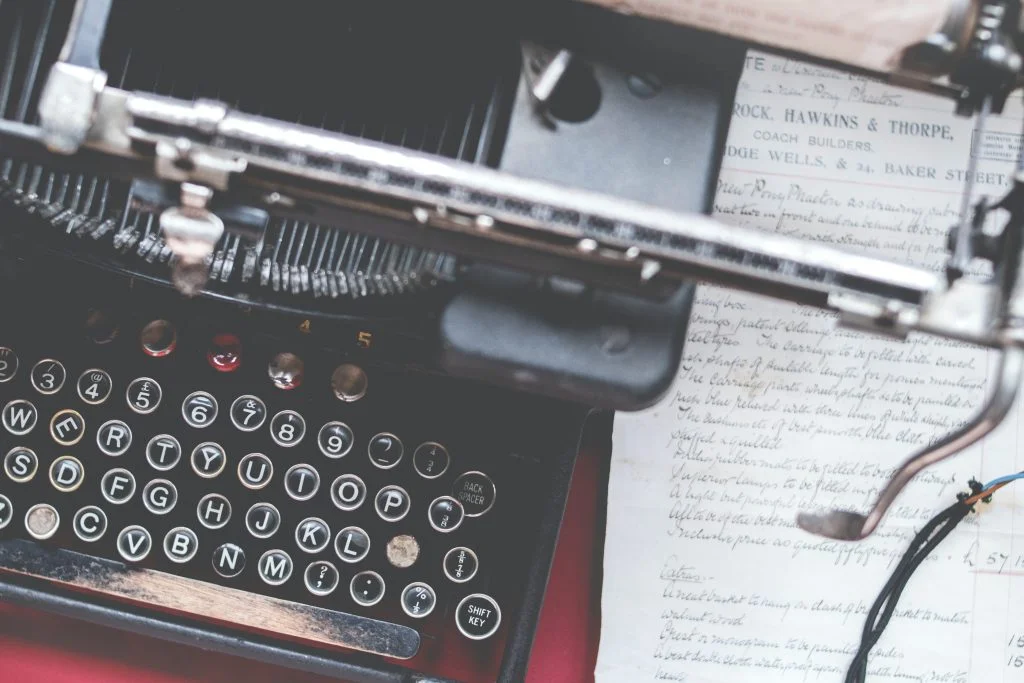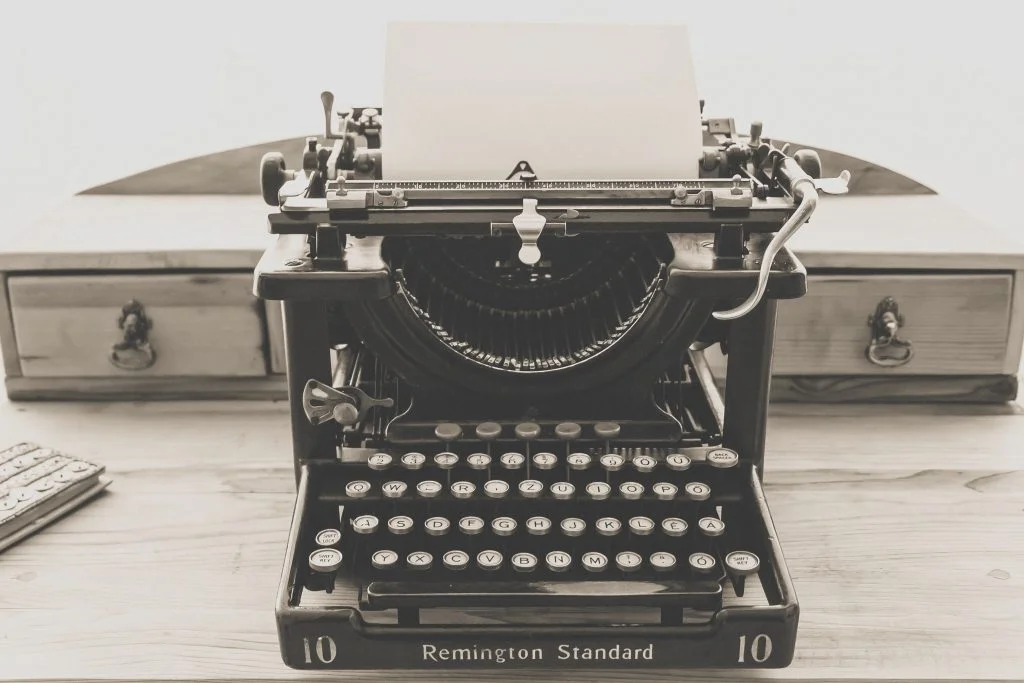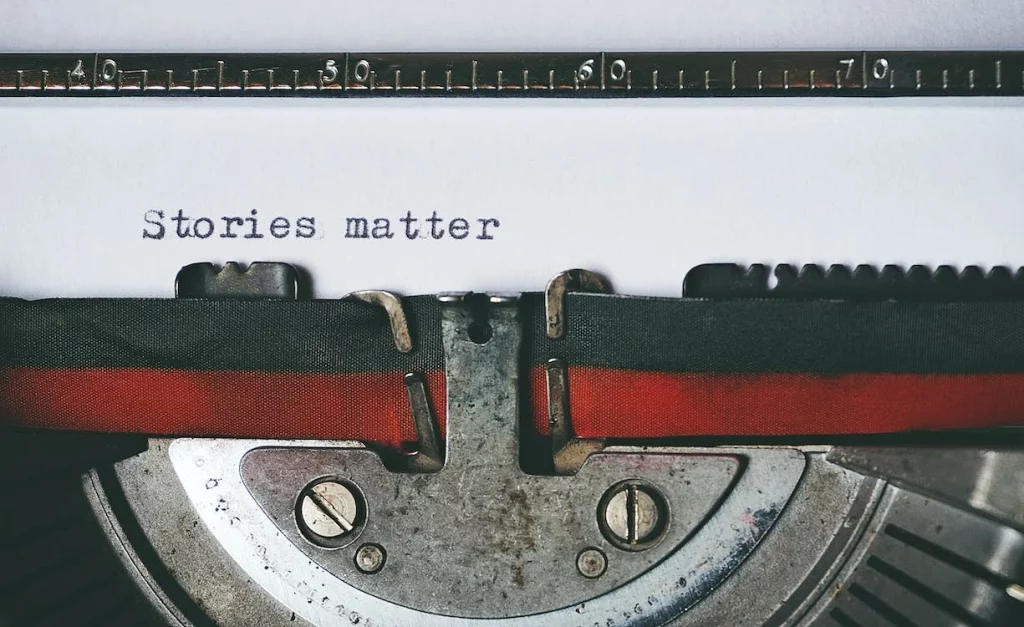The first time I tried using a typewriter, it felt like arm day at the gym. Who knew typing something could double as a bicep workout?
Now that I’ve delved deeper into the world of typewriters, I’ve uncovered some facts and myths that make them even more fascinating than my initial, slightly muscular introduction. Want to take a nostalgic, and occasionally hilarious, journey through the world of typewriters with me?
A typewriter is a means of transcribing thought, not just data.
Richard Polt
Typewriter Facts
Let’s check together the facts I gathered for you. As always, remember that I created a quiz for you to test your knowledge on the topic, so don’t disappoint me.
- Christopher Latham Sholes, along with Samuel Soule and James Densmore, created the first useful typewriter in 1868.
- The “QWERTY” keyboard was made to stop the keys from sticking by putting often-used letters far apart.
- The first typewriter was named Sholes and Glidden typewriter, and it was sold by E. Remington and Sons.
- Mark Twain said he was the first to type the book script for “Life on the Mississippi”.
- At first, the word “typewriter” meant the person typing, not the machine.
- The sentence “the quick brown fox jumps over the lazy dog” was used to check every letter on the typewriter.
- Electric typewriters came around the 1920s, but people didn’t use them much until the 1950s and 1960s.
- IBM brought out the Selectric typewriter in 1961, using a ball instead of bars for typing.
- The top speed record in typing was set using a typewriter, not a computer.
- Typewriters were important in World War II. The Nazis used them for secret codes in the Enigma machine.
- People used carbon paper in typewriters to make many copies before there were copy machines.
- The last typewriter factory, Godrej and Boyce, shut down in 2011 in Mumbai.
- Typewriters didn’t always have a key for the number 1 or the exclamation mark, so people found other ways to type them.

- The ribbons in typewriters had ink to help press letters onto the paper.
- Nowadays, some people, like hipsters, really like using typewriters again.
- Typewriters made a “ding” sound to tell you to move to the next line.
- Different countries had typewriters with keys that matched their languages.
- People used Tipp-Ex to fix typing mistakes on paper.
- The priciest typewriter, the Hermes 3000, was loved by writers and cost a lot.
- Tom Hanks really likes typewriters and has many of them.
- The early typewriters struck upwards when typing.
- Typewriters helped more women get jobs in offices in the 1900s.
- Corona made a typewriter you could carry in 1912 which was good for people who needed to write while moving around.
- The Monroe Calculator Company made a special typewriter just for numbers.
- Because of typewriters, people learned to type without looking at the keys.
- Old typewriters cost a lot, so people often rented them.
- Famous books from the 1900s, like those by Hemingway, were typed on typewriters.
- In the 1980s, new typewriters with small screens became popular.

- Before special fluids, people used special paper to fix typing errors.
- The shift key in typewriters was used to switch between small and capital letters.
- The spacebar was the biggest key and was used a lot.
- New types of typewriters were made to be quieter than the old ones.
- Typewriters have been used in movies to bring a feel of the old times.
- Typing Chinese on a typewriter was tough because the language is so complex.
- Some typewriters could type fancy, like cursive writing.
- Typewriters that could type bold letters would strike the paper twice as quickly.
- The movie “A Few Good Men” was one of the last big films written with a typewriter.
- Groups of typists used to work together in big rooms, typing documents.
- Teleprinters could send typed messages over long distances.
- Typewriters pressed inked ribbons onto paper to show the letters.
- You had to move the lever on a typewriter to go to the next line.

- There were special typewriters for writing in braille.
- Before computers, typewriters were used a lot in offices and news places.
- People used typewriters to make picture designs called ASCII art before computers did it.
- The word “typeface” comes from the group of letters a typewriter could make.
- When typing, the part holding the paper moved the opposite way of a computer cursor.
- Old typewriters sometimes didn’t have a zero key, so people used the letter O instead.
- A new keyboard design, Dvorak, was made to be better, but not many people used it.
- There are museums that show the history of typewriters.
- In the mid-1900s, there were typewriters that could remember some of what was typed.
Typewriter Myths

Now that you’ve finished reading some fun facts about typewriters, it’s time to expose some myths that you can find online about them.
- People only used typewriters in the Black and White Era.
While typewriters rose in popularity during the late 1800s and early 1900s, people continued to use them widely throughout the colorful decades of the 20th century. In fact, many people and businesses still used typewriters during the 1980s and even 1990s, long after color television and photography were common. - All Typewriters Are Noisy.
While the “click-clack” sound of a typewriter can be iconic, not all typewriters are noisy. They designed “silent” models to minimize noise, allowing writers to work without disturbing others. Some folks even miss that old rhythmic typing sound! - Typewriters Can’t Make Errors.
Anyone who’s used a typewriter knows it’s all too easy to press the wrong key. While it’s true that digital devices have a backspace, they invented correction fluids and tapes for typewriting mishaps. Yep, we’ve all been there! - Typewriters Are Obsolete and Useless Today.
Typewriters are making a comeback in some circles! Many writers and artists value the tangible feeling and focus that come with typewriting. Plus, they’re pretty trendy in the vintage decor scene. Old-school cool, anyone? - They designed the QWERTY layout for speed.
Designers didn’t actually create the QWERTY keyboard layout, found on both typewriters and modern keyboards, for speed. Instead, they designed it to prevent jamming by spacing out commonly used letters. So, it’s not about speed, but about smart engineering!
No products found.
Typewriter FAQ

While I was searching for some of the most frequently asked questions about typewriters, I found some things that I had no idea about. Like question number two below,
- How does a typewriter work?
Think of a typewriter as a keyboard with attitude. When you press a key, it swings a typebar (with a specific letter or character) to smack an inked ribbon, leaving a mark on your paper. And voila, you inked your thoughts in! - Who invented the first typewriter?
Christopher Latham Sholes, Samuel Soule, and Carlos Glidden conjured up the first practical typewriter in 1868. And guess what? The well-known Remington company decided it was cool enough to produce as the “Remington No. 1.” - Do people still use typewriters?
Even in our digital age, there’s a charming tribe of enthusiasts and writers who adore the old-school vibes, the clickity-clack sound, and the pure connection of thought to paper that typewriters offer. - Do they still sell typewriters?
Oh, absolutely! They might not be on every street corner, but you can get one from specialty nooks, online treasure troves, or even that antique shop you’ve been meaning to visit. - Why do some people prefer typewriters over computers?
It’s all about the feel. The rhythmic sound, the lack of digital distractions, and for some, it’s like a time machine. A beautiful journey back to simpler times. Plus, there’s something magical about carving your stories directly onto paper.
Typewriter Quiz

The time has come. Dare you take this typewriter quiz? Fail, and I’ll switch your keyboard to typewriter mode permanently!
Conclusion
And there we go. I hope you enjoyed this trip down the memory lane of typewriters with me. I typed this on a modern-day keyboard with LED lights (what a nerd), but it still felt so good, so I can’t imagine how cool the writers back in the day were feeling.
Now for my question to you: Can you imagine a typewriter with an emoji key? What emoji would you demand on your vintage typewriter?


